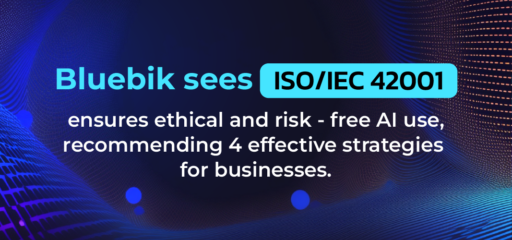Tips for insurance businesses to expedite innovations to attract customers’ hearts via strategically applying technology and building a business ecosystem through alliances to provide extensive products and services. Insurers may invest in the so-called Insurtech to develop innovations, which help solve existing problems and offer insurance products based on insights into customer needs, plus allocate budgets for system research and development. Bluebik also suggested three ways for an insurer to gain business advantages and strengths.
Amid intense competition in the insurance industry driven by changing consumer behaviors and needs in the digital age and the Covid-19 outbreak, The organizations are competing against time to adjust their business strategies. However, few organizations will succeed due to limitations in terms of capital, human capability and others. Thus, the strategic application of technology is crucial for a business to achieve sustainable growth and to become an industry leader.

One key to becoming a leading insurer is to create a business ecosystem that offers a wider range of products and services, which can be done through the following 3 guidelines:
1. Creating a strategic alliance network: Seeking alliances will help an insurer to offer a broader range of products and services. New products may include not only life insurance but also health insurance and travel insurance. For example, Allianz has joined hands with Baidu, a Chinese tech giant, allowing Allianz to tap into online consumer behavior data from Baidu and to offer travel insurance products to airplane ticket buyers. Moreover, creating an alliance network will expand channels accessible to customers. With a larger network, customers can access both the insurer’s own channel and other platforms. Another clear example is Thai Life Insurance’s partnership with Shopee, a large e-commerce platform, in selling health insurance policies through an online platform, benefitting both parties. As a result, Thai Life Insurance’s selling channel has expanded through including the Shopee platform, and vice versa.
2. Investing in Insurtech: Investing in a tech-savvy Insurtech company will help insurers shorten time for developing a brand new system by which the insurers can utilize know-how and technology from the company. Chinese large insurer Ping An, for instance, has invested in several Insurtech companies such as Lufax (an online personal finance management platform) and OneConnect (a FinTech firm specializing in Blockchain and Big Data), which help create its own business ecosystem where products and services are linked and advance a value chain with the technologies such as an adoption of Artificial Intelligence (AI) to enable automated operations, and application of Cloud Computing to enhance system security and support customer databases more efficiently.
3. Placing research and development as a top priority: Investing in system and innovation development is vital to build a sustainable business ecosystem in the long run as organizations will have technologies appropriate for catering to customer needs. To illustrate, Hanwha, a leading insurer in South Korea, has invested large amounts of funds in developing a data analytics system to gain deep customer insights, enabling the company to develop products and services that most satisfy customer needs. With the company’s application, the most suitable products are suggested to particular customers at given times. The company also has developed an e-signature system with encrypted passwords so that the customers can conveniently do transactions via mobile phones.

Apart from creating a business ecosystem, an insurer should prepare itself to embrace technology based on the following 3 principles:
1. Becoming a boundaryless business by reducing technological gaps and constraints. Companies should get ready for a future where they must increase system connections to facilitate operating system flexibility and increase business opportunities. Perhaps, a business may create an Open API system to exchange data across different systems to ease data access or utilize a Micro Service approach where a system is divided into micro systems for easier and faster repair or development.
2. Becoming an adaptable business. Companies should be able to accommodate ever-changing business needs e.g. adopting Cloud Computing to optimize budget due to workloads as appropriate in the future.
3. Becoming a radically human organization. This involves embracing the commonly implemented concept of an Agile Mindset which people within an organization should be able to agree to changes and adapt themselves rapidly. With technologies being adopted by different functions within the organization, people must have agile and open mindsets. Therefore, the way of thinking is equally important to the technology or system itself.
Amongst rapid changes, businesses must be well-prepared in terms of technology and business strategies to become a leader in the insurance industry. In the fast-moving insurance industry, those without any sound plan will find it hard to keep up with other players. In order to have a suitable plan, businesses need to review their capabilities to clearly identify their strengths and gaps as well as the act of applying new technologies to bridge the gap will drive innovations and eventually deliver value proposition to customers.




